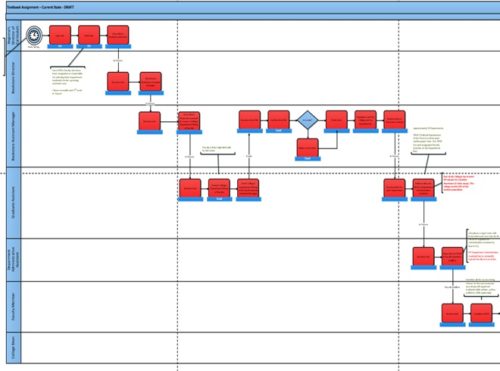
Sadly, CRM Projects fail all of the time. But they don’t have to! Why do CRM projects fail? TSI has partnered with dozens of corporate and higher education organizations to help evaluate and select new customer relationship management (CRM) solutions, and we’ve learned a few things along the way. For example, did you know that nearly one-third of all CRM projects fail?
Below are some top reasons for CRM failure and how your organization can take proactive action to mitigate failure.
Lack of a Business Case
One reason for CRM failure is that organizations do not develop a business case on the front end of their CRM selection. A business case serves as justification for initiating a project or selecting a new software. The business case measures the cost and resources needed against the anticipated business needs, long term strategy, and potential associated risks. This document helps derive buy-in from various stakeholder groups, including senior-level administrators, and sets the stage for project initiation. Not creating a business case could lead to lack of project focus, too much attention on non-essential issues, and not thoroughly assessing risk factors.
Don’t Have a Handle on Current Processes
To start working toward an ideal future state that meets business needs, it is imperative to map out current state processes. Conducting business process mapping and improvement sessions help bring clarity to a process, including who is involved, whether activities are manual or automated, and necessary action to improve efficiencies. Business process mapping is a forward-thinking action aimed to understand what is happening now in a process, why it is happening, and what is desired to happen in the future. Below is a sample of a business process map.

CRM project failure can occur when current and future state processes are not mapped because of the facts these activities bring to light, including pain points and opportunities for improvement. CRM failure can be prevented when there is a clear vision and goals to move toward within process areas.
You Don’t Have the Necessary Buy-In
CRM projects often fail because of executive sponsorship issues. Unfortunately, this lack of support can enter at any stage of the process for a number of reasons, including financial disruption, political instability, leadership turnover, and divergence of strategic priorities. Executive sponsors should remain engaged and invested throughout the life of the project to maintain buy-in and support. CRM projects oftentimes fail because of the lack of trust of the executive sponsor, or the executive sponsor’s lack of trust with the project manager or team. It is important to establish trust early and maintain that trust that the executive sponsor always has a pulse on the project, both positive and negative. Project managers should secure buy-in from executive sponsors and other leaders who have a key role in the decision-making process.
These influencers may include:
- Executive Sponsors or Administrators from the Marketing and “Business Development” side of the organization
- Procurement
- Legal Counsel
- Chief Financial Officers or your organization’s financial entity
- Information Technology Leadership
Conduct periodic health checks with these individuals to ensure transparency and identify any roadblocks that could lead to project pause or failure.
Not Weighting Analysis Dimensions Correctly
Not weighing analysis dimensions to align with the strategic priorities of the organization is another cause of CRM implementation failure. When selecting a CRM, organizations have a variety of factors to assess in order to select the best fit solution.
Analysis dimensions could include:
- Functional and User Experience Scoring
- Technical Scoring
- Vendor and Implementation Partner Viability
- Reference Checking
- Total Cost of Ownership, Transition, and Support
For example, some institutions weigh “total cost of ownership, transition, and support” as the most important factor, thereby choosing a CRM vendor based on who had the lowest overall cost rather than taking a holistic view of all software options. This choice led to a poor functional fit, and ultimately a failed selection.
Use These Factors to Direct Your Success
As you can see, there are a myriad of causes of CRM failure, and there are plenty of reasons beyond this list. But your project does not need to be another statistic. In fact, if you use this information, your CRM project can be headed down the road for success.
Since you and your institution are investing time, energy, and resources into this selection, being as proactive as possible is key. One tool, beyond this information, that may help is TSI’s Change Readiness Survey (free for your use), to help assess whether these factors are aligned.
Lastly, please know that TSI has helped many institutions navigate their CRM selections. This is a function of successfully utilizing our expertise of the CRM marketplace and following our proven approach, we are prepared to help your organization transform for the future.
